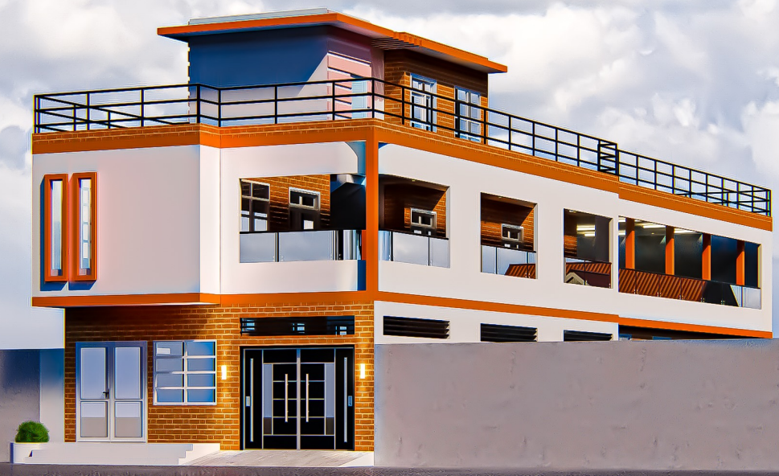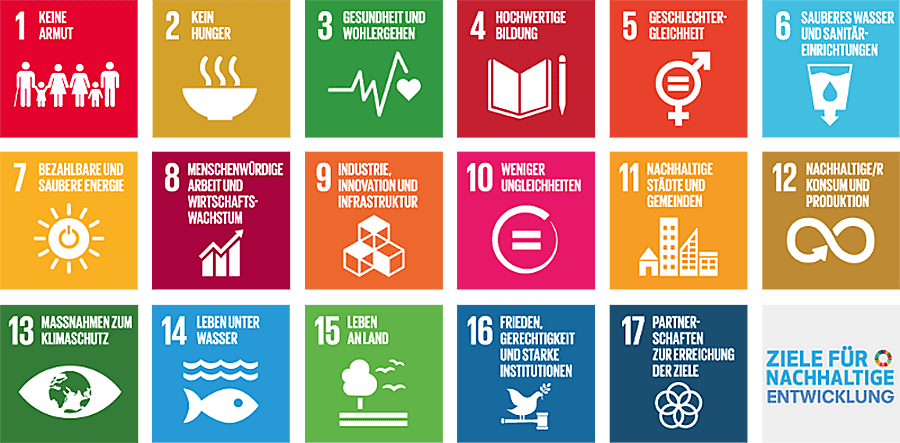A sustainability center with earthen construction in Togo.
Deutsche Version: hier | Version française: ici
 Volunteerism, Join Us in Empowering Minds, Transforming Communities @KFDWB
Volunteerism, Join Us in Empowering Minds, Transforming Communities @KFDWB
❝ The Sustainability Center in Togo, also a safe volunteer center, should also be a safe training, practical, exchange and stay location for research and teaching in the field of sustainable construction and technology for Austrians, which is also for EU citizens and other nationalities who want to do something in Togo as part of an exchange of experiences or training in order to experience the local culture.
Project Idea:
Why and how did the project come about?
1.) The project is part of our “Why should I get involved?” (see: here ) project. Created voluntarily alongside your studies within the TU Vienna. The project combines theory and practice at the same time and focuses on technical development cooperation.
2.) The first trip to Togo was carried out in July 2024 to analyze the needs of the project on site and identify potential project partners in Togo.
3.) The project was very well received by the municipality of Davié and the identified project partners in Togo. This resulted in the first draft of the center’s architecture with a cost estimate for the construction of the building from volunteer work.
4.) Later, a voluntary project team was founded with students from the Vienna University of Technology. In addition, we also won Engineers Without Borders Austria as a project steering committee (see: here ) and TU Vienna (see: project reference: here )as a potential project partner.
Project impact:
What does the project do for the population?
1.) The sustainability center reduces energy poverty, lack of career prospects and illegal immigration in the region and, in addition to high-quality training, also offers information about modern technology and a sustainable future for families.
2.) By training qualified solar technicians, the renewable energy sector in Togo can continue to grow sustainably.
3.) Young people have better career opportunities thanks to the knowledge they have acquired and the increasing need for skilled workers.
4.) Environmental sustainability and environmental awareness are strengthened.
5.) In addition, our sustainable construction program and technology contribute to achieving the climate goals and the Sustainable Development Goals (SDGs) of the United Nations. In particular, the goals of “inclusive, equal and high-quality education for all” and “access to reliable, sustainable and modern energy for all” are addressed and promoted by the solar program.
6.) Our volunteer engagement strategy also fits perfectly with the European Solidarity Corps program, and with the global efforts against climate change, with a focus on long-term, sustainable development in a global and local communities’ context.
7.) The center is intended to sustainably improve the living conditions of Togo’s disadvantaged young people through its diverse activities, and this is possible in an infinite number of different ways. “Infinite” also alludes to the inexhaustible pool of talent that should be discovered and promoted.
Target groups:
How are the potential target groups reached?
1.) At first glance, there is access to hard-to-reach target groups (e.g. students), especially to the so-called NEETs, i.e. young people who are neither in training nor in employment or a qualification measure.
2.) We maintain a strong relationship with our local project partners (Volunteer agency in Togo [1], Uni. Kara [2], Uni. Lomé [3], Uni. UCAO [4], Ifad [5], AETE-EAMAU [6], Kya-energy.com [7]). Campus Togo [8] a platform for the Togolese student body. This provides a platform for networking. The relationships we build, often over many years, form a solid foundation on which we can build and continue to build.
Project Finance:
How will the project be financed?
1.) We were able to get the initial 300m² property in Davié through donations.
2.) Through Crowdfunding.
3.) Through generous donations and support from companies, organizations, individuals and foundations that are interested in local and international climate change solutions and global sustainability.
4.) Part of the project costs are covered by volunteers Working.
5.) Since it is important to us that the local people also contribute something and do not receive everything “for free”, we would like our local project partners to contribute financially. If they do not have the opportunity to do so, they can do voluntary work during the preparation and construction of the building.
6.) The long-term financing of the project will come from income:
a.) Paid training courses.
b.) Course room rentals.
c.) The repair of PV systems.
d.) The research room (Internet café).
e.) The development of projects in the field of e-mobility (e.g. SV2H), sustainable construction, IT security and volunteer work.
Project prospects:
What will happen in the future?
1.) Ms. Schön, a project member, is currently preparing her stay for June 2025 for field research in Togo to take a closer look at the architecture of the building and to analyze and design the selection of building materials so that the sustainability center remains ecological and cost-effective in the long term.
2.) We are currently in a major planning phase to expand our donation and funding strategies for the construction of the building.
3.) Since we have a lot of expenses for the construction of the building, we are grateful for every donation, funding and volunteer work that comes into it.
4.) The voluntary project team in Austria is responsible for managing the project in the initial phase. During the operational phase, the on-site project team should ensure building maintenance and smooth processes.
5.) Written commitments to support the project have already been made by several local partner organizations. Even volunteers are showing interest in taking part in the project on a voluntary, unpaid basis.
6.) There should also be a project team on site consisting of volunteers. The job will be to organize courses and events, maintain the building and take part in local project management and supervision.
7.) The voluntary on-site project team receives further support from a volunteer project team from Austria within the “Why should I get involved” project (see: here ).
8.) The training program will begin simultaneously with the construction of the center and will run for two years. 32 training units in the field of sustainable building and technology are planned.
Carpentry: 4 training sessions per year, bricklayer: 4 training sessions per year, electrician (photovoltaics): 4 training sessions per year, and plumbing: 4 training sessions per year.
9.) Monitoring and controlling.
Promoting sustainable development by volunteering / Volunteerism
❝ The project not only offers a solution to pressing challenges such as energy poverty, lack of career prospects and illegal immigration, but also shows how local resources and modern knowledge can work hand in hand to bring about sustainable change. Let us voluntarily build a sustainability center out of clay together in Togo that establishes climate-friendly and innovative construction and sustainable training techniques. Imagine a world in which young people in Togo and in rural Africa have access to high-quality education, modern technology and a sustainable future.
The project is also selected as a good example of a project (Good practice) within the framework of the Volunteering in the Service of Development Aid and Sustainable Development.
See: Link
Warum ist mehr freiwilliges und ehrenamtliches Engagement an der TU Wien so wichtig?
Reference: Further information on volunteer work can be found:
On oesterreich.gv.at

a.) Paid training courses.
Carpentry: 4 training sessions per year, bricklayer: 4 training sessions per year, electrician (photovoltaics): 4 training sessions per year, and plumbing: 4 training sessions per year.
Promoting sustainable development by volunteering / Volunteerism
❝ The project not only offers a solution to pressing challenges such as energy poverty, lack of career prospects and illegal immigration, but also shows how local resources and modern knowledge can work hand in hand to bring about sustainable change. Let us voluntarily build a sustainability center out of clay together in Togo that establishes climate-friendly and innovative construction and sustainable training techniques. Imagine a world in which young people in Togo and in rural Africa have access to high-quality education, modern technology and a sustainable future.
See: Link
Warum ist mehr freiwilliges und ehrenamtliches Engagement an der TU Wien so wichtig?

